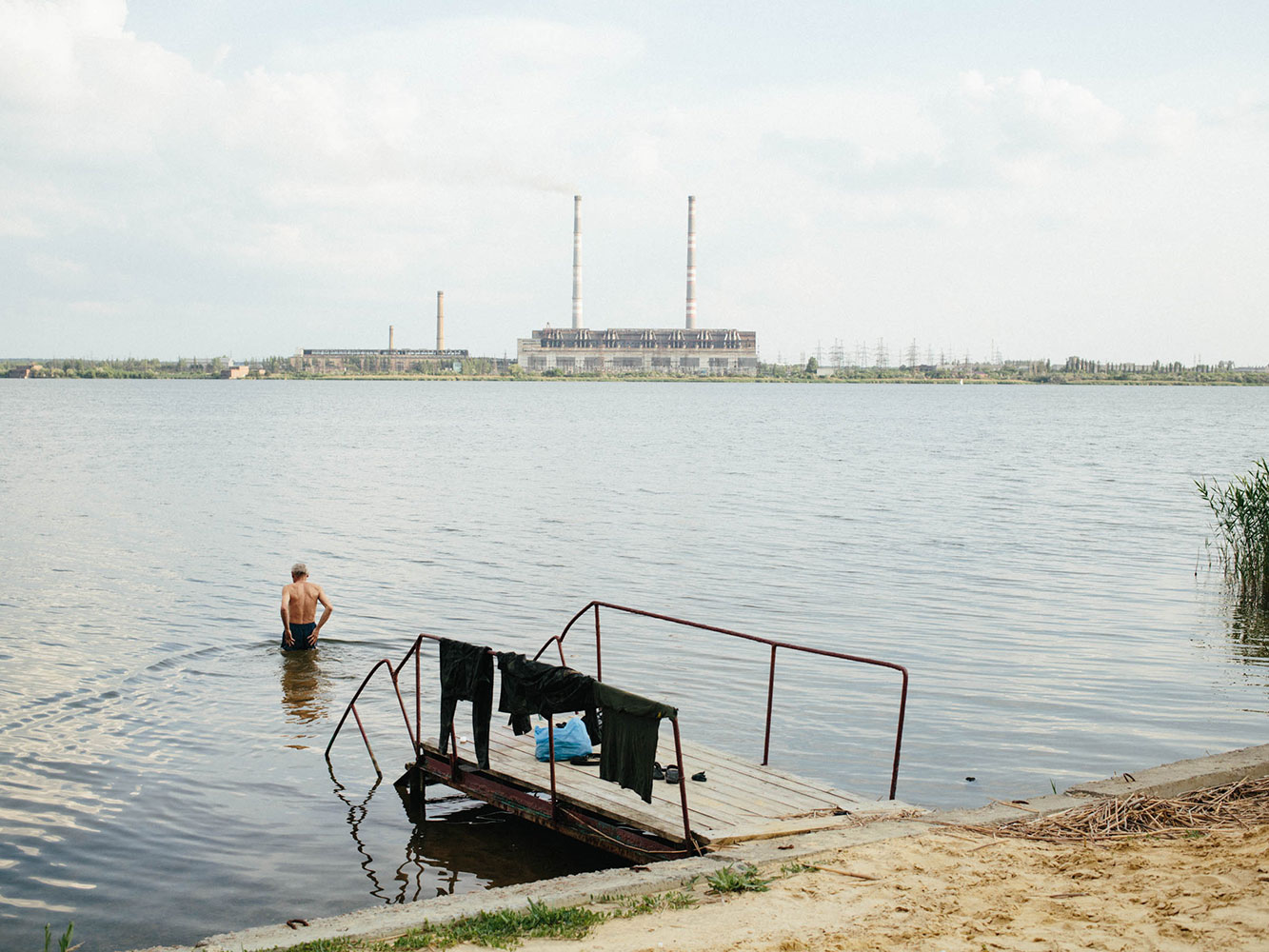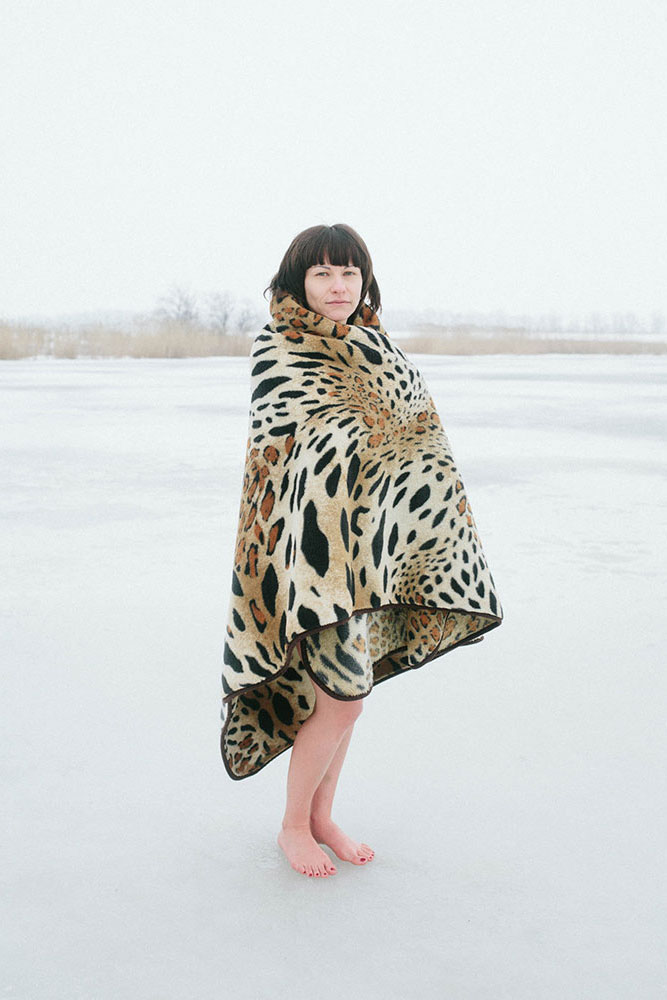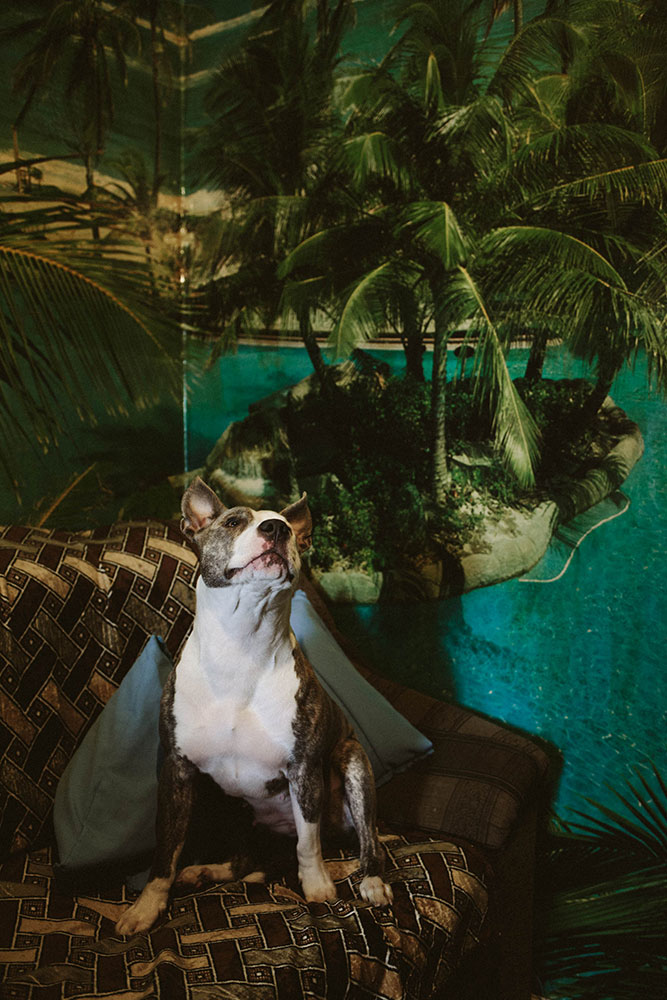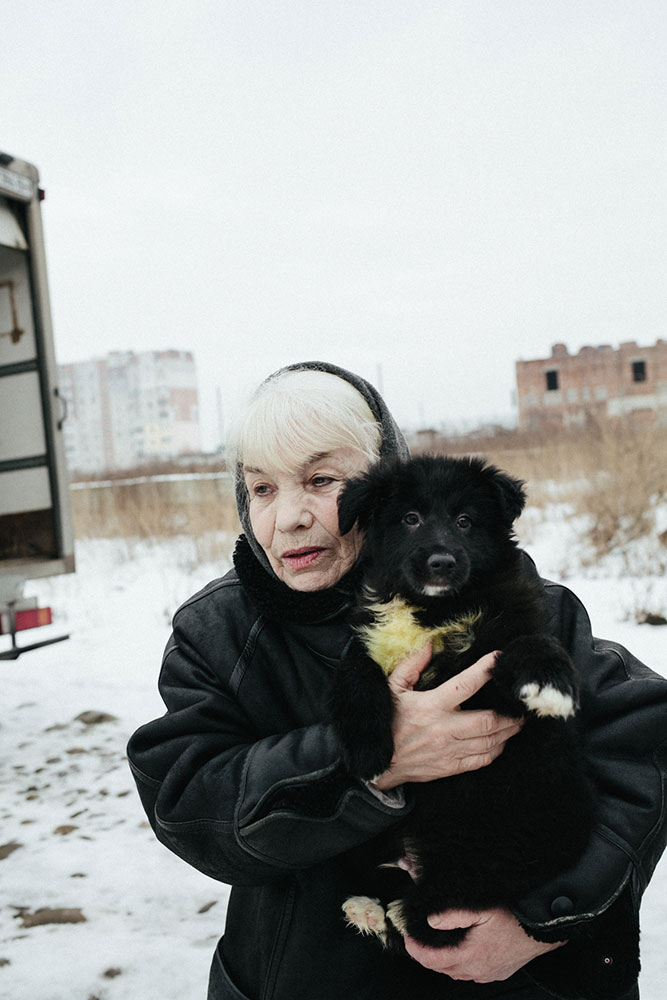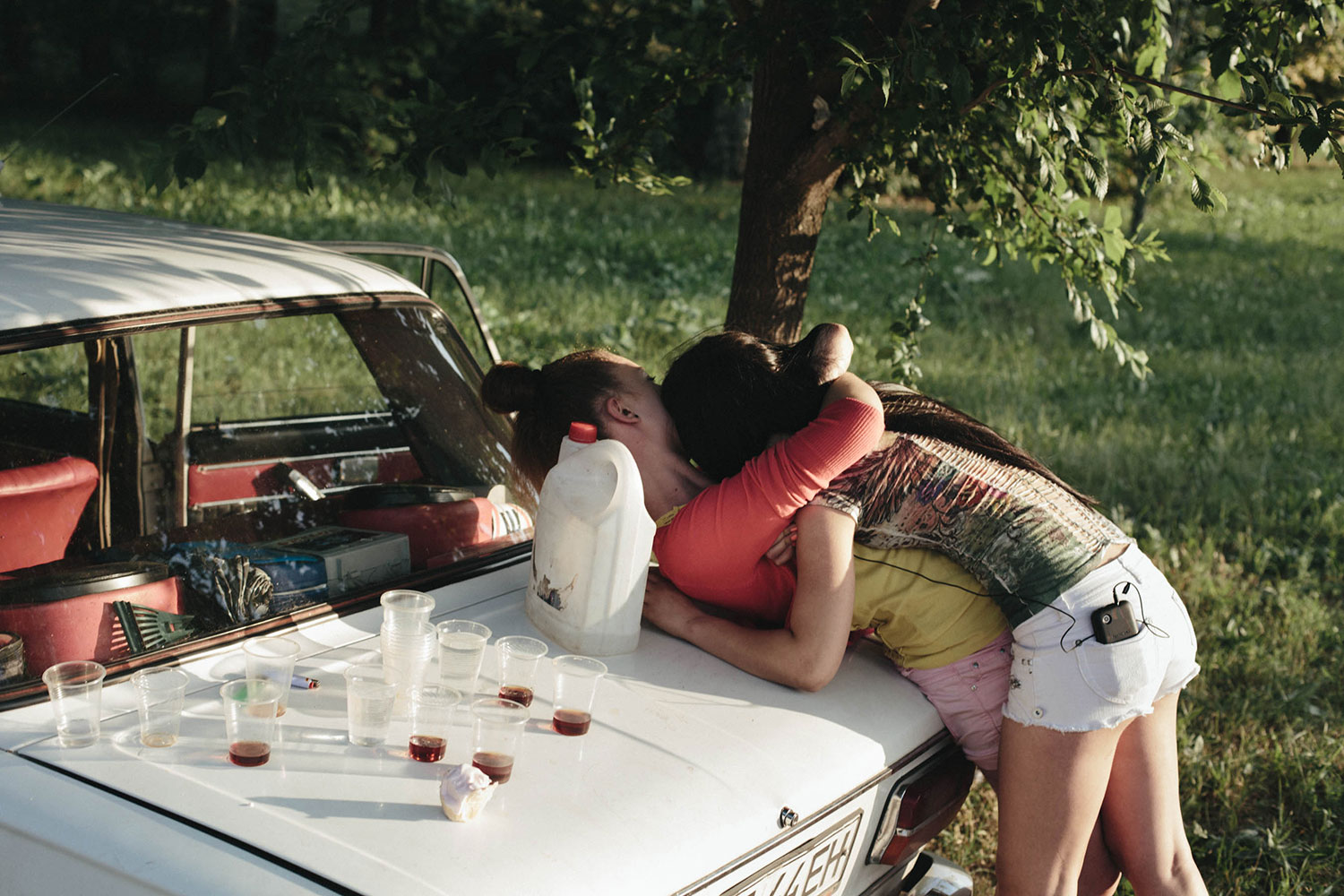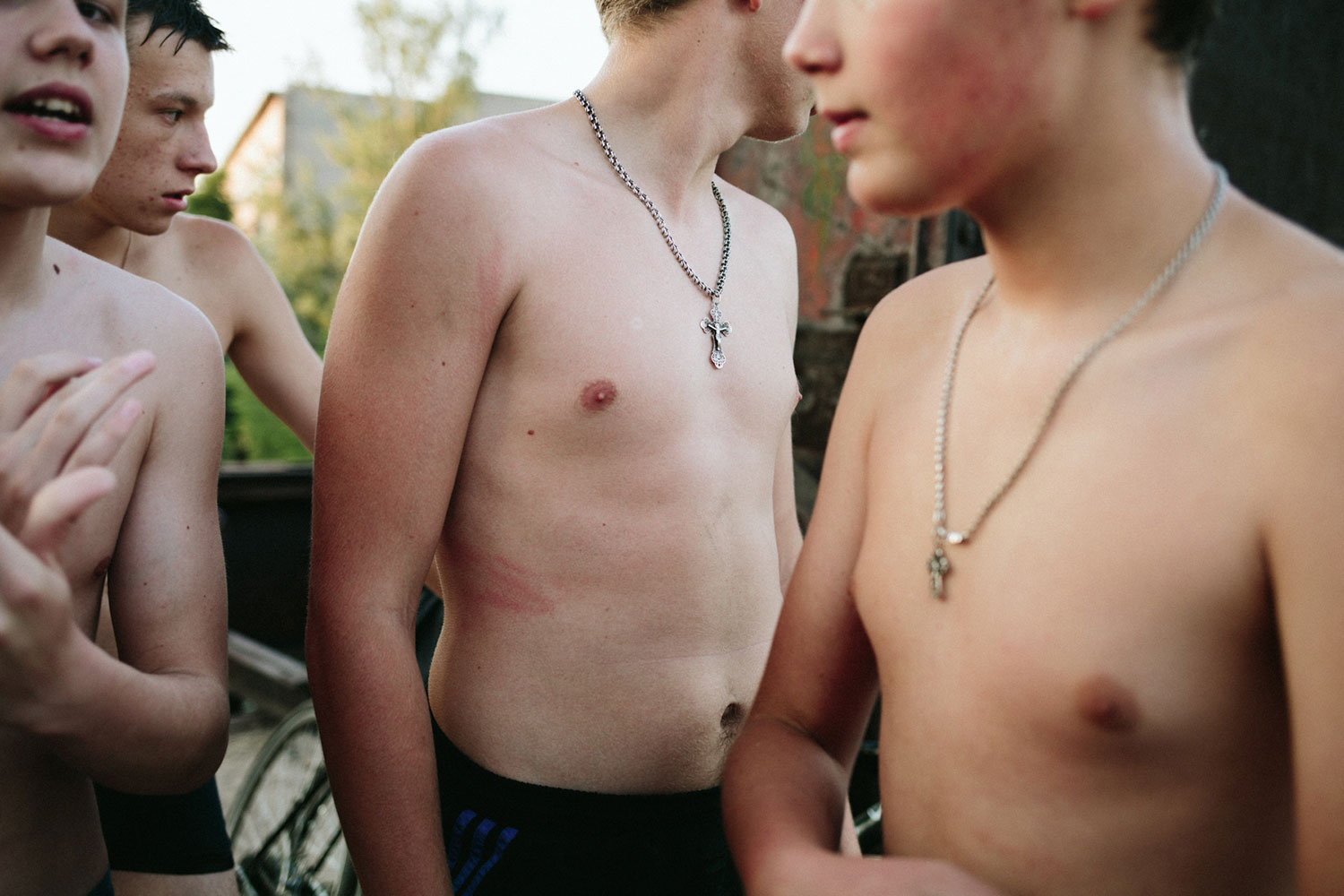War on Instagram: merging conflict and everyday life in Christopher Nunn’s photos of Ukraine
Ahead of Christopher Nunn's exhibition Holy Water at Calvert 22 Space, Jessie Bond examines his quiet yet moving photographs of war-struck Ukraine and asks: what is conflict photography supposed to look like in the age of Instagram?
Since the first eruption of protests in 2013, numerous foreign photographers have travelled to Ukraine to document the ongoing conflict. Among these was British photographer Christopher Nunn, who was caught up in shelling in the Ukrainian town of Avdiivka, earlier this year. Ahead of his exhibition Holy Water at Calvert 22 Space, Jessie Bond examines his quiet yet moving photographs of war-struck Ukraine and asks: what is conflict photography supposed to look like in the age of Instagram?
The protests in Maidan Nezalezhnosti (Independence Square), Kiev — which started peacefully in November 2013 before escalating into the ongoing conflict in eastern Ukraine — produced spectacular imagery. Improvised barricades set on fire, clashes between anti-government protestors with improvised weapons and police in riot gear, burning vehicles and skies blackened with smoke: these images looked like war.
In her 2003 essay Regarding the Pain of Others, Susan Sontag states: “Something becomes real — to those who are elsewhere, following it as ‘news’ — by being photographed. But a catastrophe that is experienced will seem eerily like its representation.” Writing seven years before Instagram launched, Sontag almost predicts the way we are now able to follow photographers documenting the unfolding events on social media. But her comment on the blurring of reality and its representation was also prescient of the hyper-documented time in which we live, when the representations we consume and produce for social media become an integral part of the way we experience life.
There is something jarring about the incongruity of encountering images of conflict alongside selfies, cat photos and plates of food
On its website, Instagram claims: “We imagine a world more connected through photos.” But what kind of connection can be offered through spectacular images like the ones coming from the protests in Maidan Nezalezhnosti? Are there other ways that Instagram can be used to distribute images that allow subtler, more personal and subjective narratives about conflict to be told, perhaps getting closer to communicating the realities of war?
During the protests across Ukraine, dubbed Euromaidan on social media because of the pro-European stance of the anti-government protestors, Instagram users provided up to the minute imagery. The platform offered a sense of intimacy and immediacy giving access to images being shared directly from photographers, be they “citizen journalists” or professional photojournalists, rather than mediated through official media channels.
At a time of mistrust in mainstream media and accusations of fake news, this preferencing of the highly subjective and personal platform is telling. As the conflict in Ukraine continued, Instagram was given an aura of providing the unmediated truth. Although not entirely uncensored the platform offers the possibility for images from multiple perspectives to be seen.
While many of the images taken during Euromaidan were arresting and drew international attention to the worsening situation in Ukraine, they only offered a simplistic view. British photographer Christopher Nunn, who was based in Ukraine for much of the conflict, turned away from creating spectacular images, instead focusing on quieter, everyday details in the hope of creating a more nuanced documentation of the conflict and the country.
This quiet approach more deftly communicates a portrait of Ukraine
In 2013 Nunn visited Kalush the birthplace of his grandmother, initially interested in exploring her early life as a displaced person. He was here when the protests started in Kiev and ending up being present in Ukraine during the revolution, political crisis and ongoing war. He describes his photographs as “a personal journey through parts of Ukraine at an increasingly difficult, turbulent and fragile time”. Over time he built a relationship with the people and places, capturing them in photographs of fragmented moments; jars of preserves on a kitchen counter, a hole cut in the ice for swimming at epiphany, a grandmother and granddaughter enjoying a simple meal. This quiet approach more deftly communicates a portrait of Ukraine, prompting consideration of the long lasting impacts of the conflict and the complex reasons for it happening.
In early 2017, together with his translator and fixer Vladimir Subotovsky, Nunn was visiting a friend in Avdiivka in eastern Ukraine where fighting between the Ukrainian army and Russia-backed separatists had intensified leaving inhabitants without water, heat and electricity. On 2 February a rocket landed next to the house where Nunn was staying, killing his friend. Nunn’s left eye was badly damaged and he was evacuated to a specialist eye hospital in Dnipropetrovsk to be treated.
While recovering in hospital Nunn used Instagram to share his experience. He posted shots of his immediate surroundings, a blurred hospital corridor, the obscured view through the lace curtain covering his window and the cleaning lady watching TV with him. Incidentally he created a highly poignant portrait documenting the effects of the conflict in Ukraine.
In Regarding the Pain of Others, Sontag stresses the importance of text to give images a context. “Whether the photograph is understood as a naive object or the work of an experienced artificer, its meaning — and the viewer’s response — depends on how the picture is identified or misidentified; that is, on words.”
Looking at the photographs Nunn posted on Instagram during his recovery in hospital, the importance of the text posted alongside images becomes apparent. On 5 February Nunn gave his version of what had happened in Avdiivka. The short text — although perhaps long for an Instagram caption — accompanies a photograph of a table with medicines beside a window covered by a lace curtain. On reading Nunn’s text, the image gains significance and poignancy. Smaller diary-like extracts track his time in the hospital. On 9 February he posted an image of an eye chart. “I’m just posting to keep sane in this hospital. Gotta keep moving. There is good coffee here but what I really need is водка (vodka). All is good. #dnipro”. These texts reveal the potential of Instagram to be a platform of empowerment in allowing people to tell their own story more explicitly than their images alone can.
Because it is, at heart, a “social” platform, Instagram also allows the possibility for viewers to reply. The comments section opens up a space for people to respond, to offer messages of support and solidarity or to question, interrogate or disagree with images they are shown, provide alternative views and counter narratives.
On 28 February Nunn posted a photograph of a woman selling second-hand goods on a blanket spread on a snowy pavement with the comment “The cycle of life #dnipro #cyclops #eyehospital”. A friend/follower comments: “Nice photo. Good to see you’re out and about.” To which Nunn responded “thank you mate. Yes just going for little walks each day. Hoping to be home soon”. Exchanges such as this are brief yet revealing. Their rawness and normality provides a more honest narrative. For followers, these conversations might unfold in real time — enhancing a sense of connection — but are also stored, recorded for posterity as snapshots of the lived experience of the conflict.
Nunn is not the only photographer to turn to Instagram to show his perspective on events in Ukraine. Ukrainian photographer Anastasia Vlasova was beginning her career as a photojournalist during Maidan. Looking back over her feed, photographs of the protests appear next to images you might expect on a 20-year old’s Instagram account, yet a photograph of her legs shows them covered in bruises, and in a selfie she poses in a gas mask. In this intermingling of everyday life and photojournalism, the role of the photojournalist as outside objective observer is called into question. Instagram gives an insight into the personal involvement of a photographer, dispelling the illusion that a critical distance is necessary to communicate powerful messages about conflict. Discussing her approach to taking photographs, Vlasvosa said: “I will always leave my fingerprints in the pictures I make. And I like that fact, because I’m not a historian; I cannot always know the truth, but I can say what I know, what I saw and what I felt.”
In his essay Watching War Evolve, Robert Hariman discusses the parallel, and sometimes entwined developments, of contemporary warfare and photography. “By documenting small gestures instead of dramatic events, the photograph reveals how violence is becoming normalised: for example, in police procedures for clearing up a bomb scene or in the resigned demeanour of civilians waiting in line at the hospital. Banality becomes the condition in which violence can be seen as violence rather than a means to an end.”
Instagram gives an insight into the personal involvement of a photographer
There is perhaps no platform more banal than Instagram. In Regarding the Pain of Others Sontag wrote that “the photographic enterprise” is driven by a hunt for more dramatic images, and that “shock has become a leading stimulus of consumption and a source of value”. It seems that perhaps now, in the tide of images unleashed by Instagram, banality has become a source of value. With users striving to reproduce a type of photograph they have already seen and been made popular — from fluffy animals to well-lit succulents in a concrete pots.
Looking back through Instagram feeds there is something jarring about the incongruity of encountering images of conflict alongside selfies, cat photos and plates of food. Yet perhaps this is where they are most powerful, hidden in the banality of everyday life. Sontag ends Regarding the Pain of Others noting the impossibility of understanding conflict without experiencing it first-hand. “We can’t imagine how dreadful, how terrifying war is; and how normal it becomes. Can’t understand, can’t imagine.” Perhaps she is right, yet Instagram, in its unedited, random, repetitive banality, perhaps allows a way for war to enter into our everyday reality, and helps us understand a fraction more.
Text: Jessie Bond
Image: Christopher Nunn
Christopher Nunn’s exhibition Holy Water will run at Calvert 22 Space from 11 – 14 May, as part of the Independent Photography Festival. More info can be found here.
On Wednesday 10 May, Nunn will talk about his book Holy Water in discussion with Palm Studios founder Lola Paprocka. The Q&A is free to attend, with a small deposit, but booking is essential. Be sure to RSVP here.
